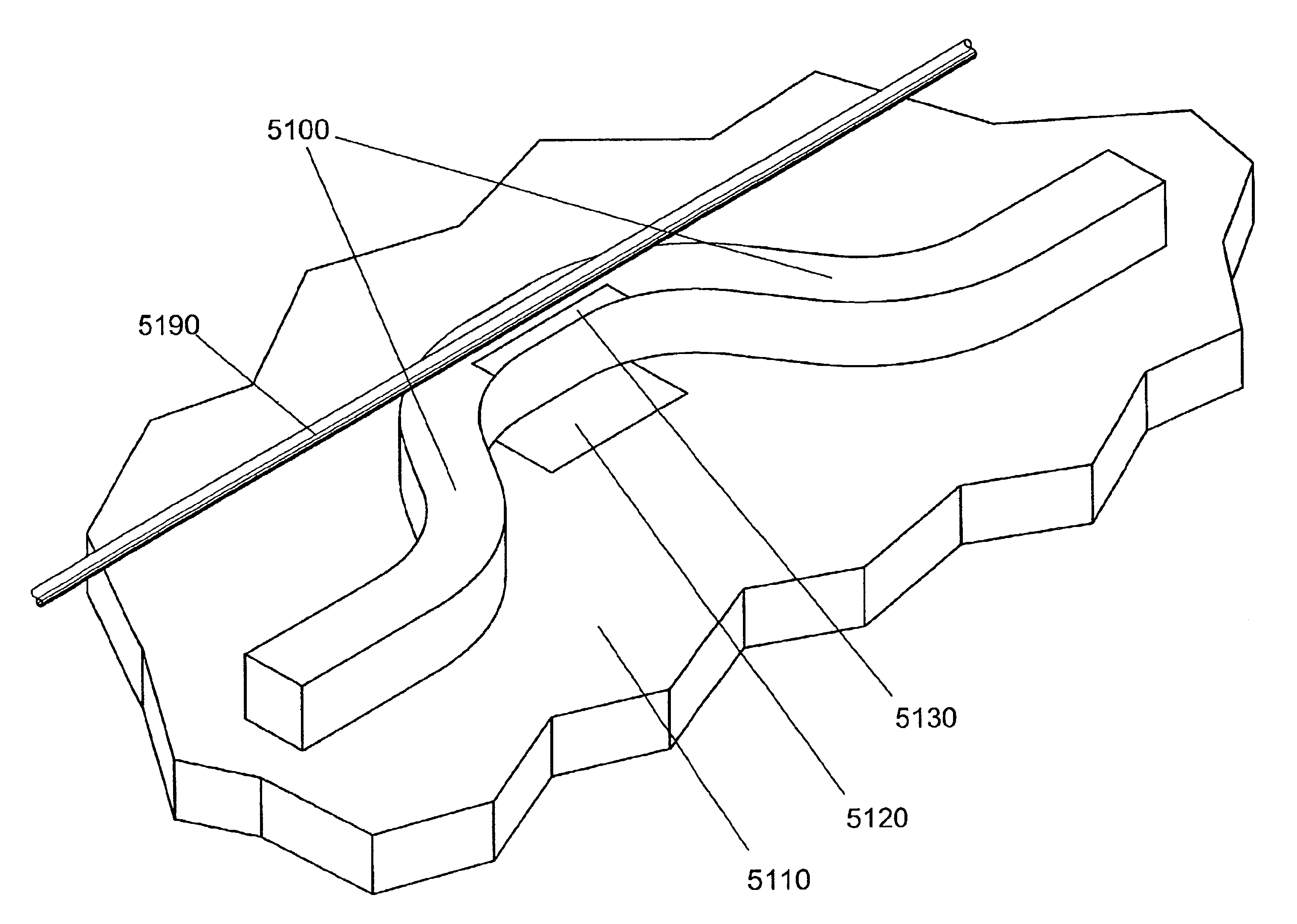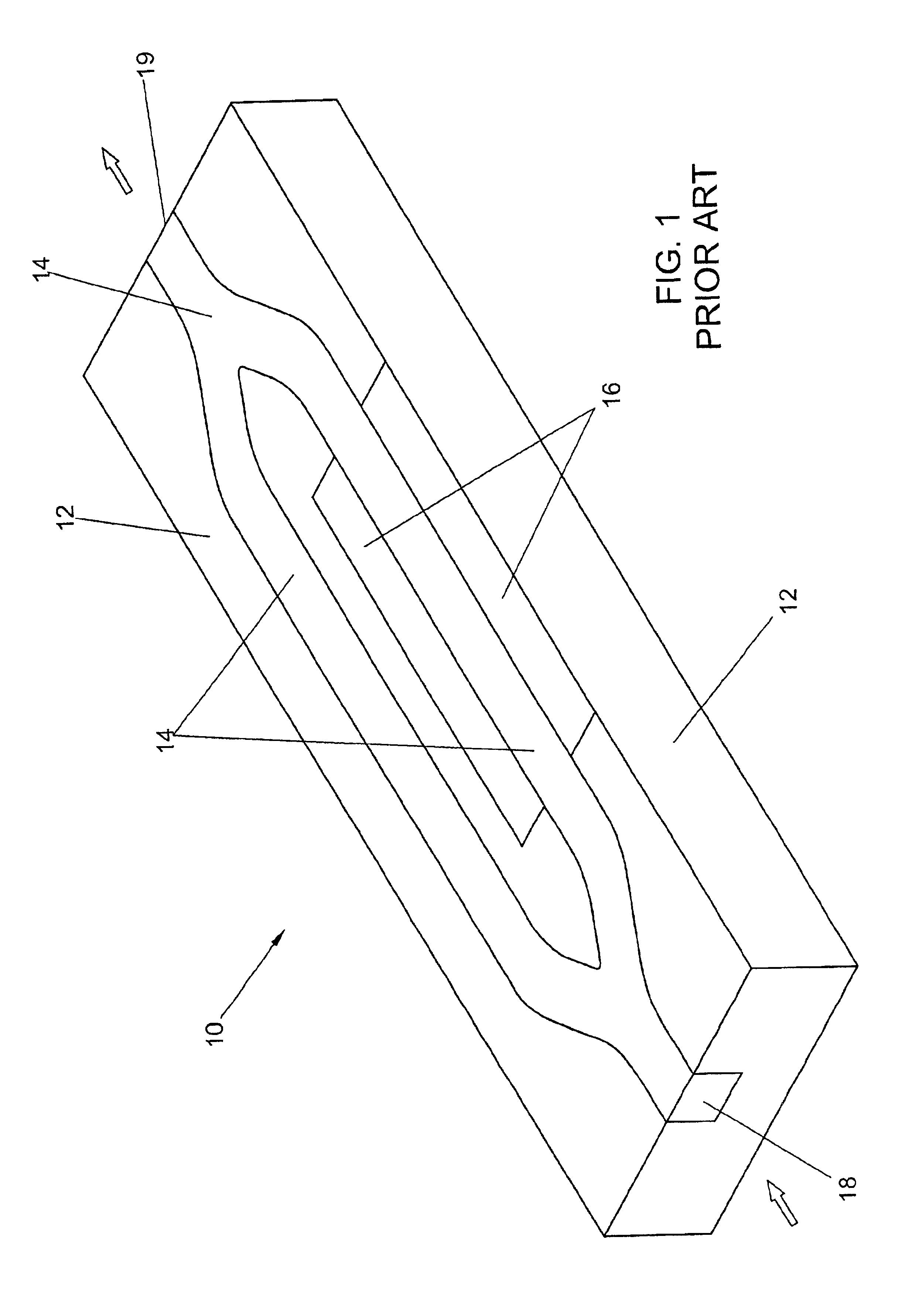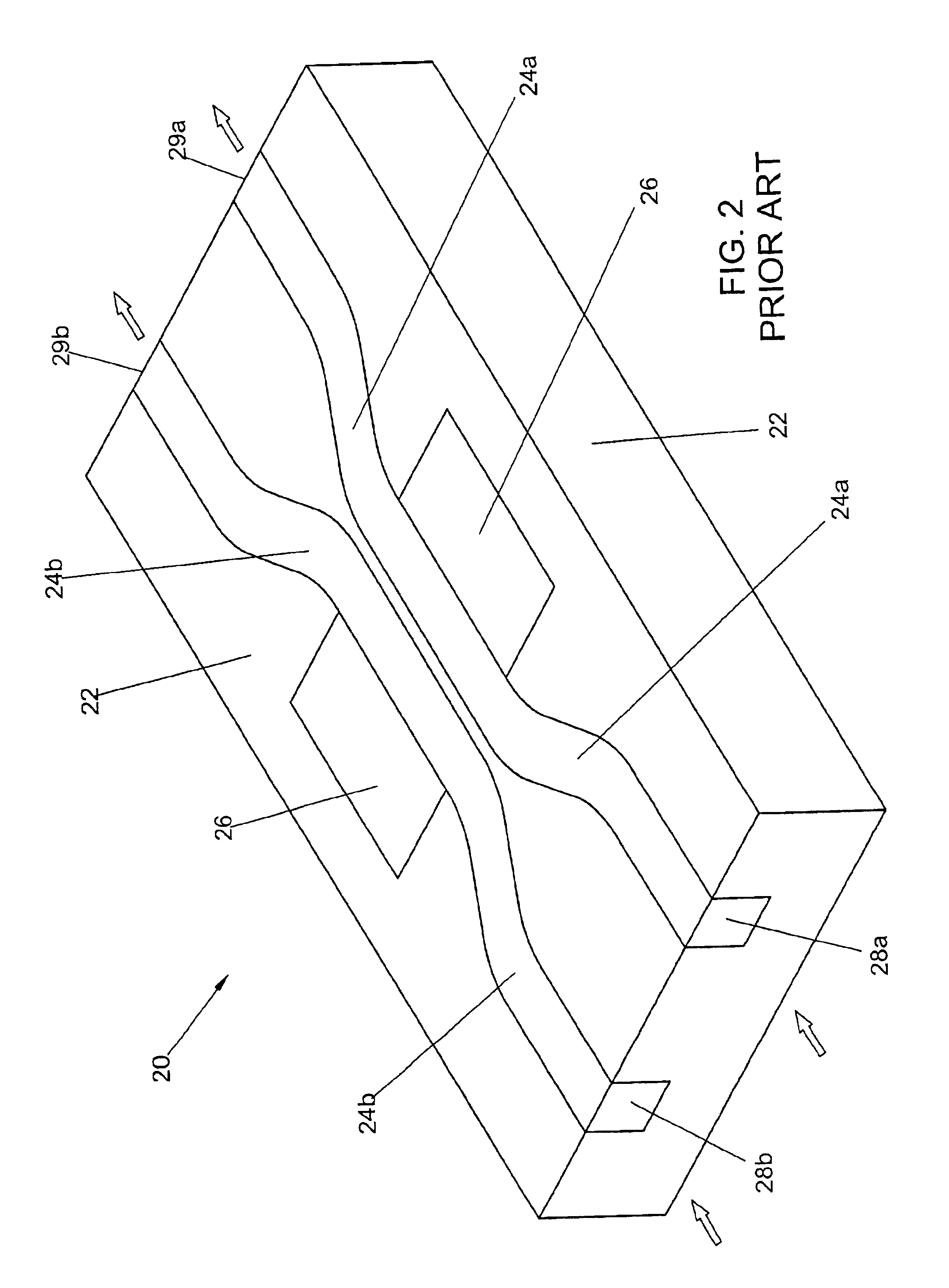Multi-layer dispersion-engineered waveguides and resonators
a multi-layer dispersion engineered waveguide technology, applied in the field of optical waveguides and resonators, can solve the problems of unwanted phase and/or frequency modulation, adds significantly to the cost, size and power consumption of any fiber-optic system or sub-system, and cannot realize the full potential of powerful new on-chip integrated optical devices. , to achieve the effect of a larger modal index shi
- Summary
- Abstract
- Description
- Claims
- Application Information
AI Technical Summary
Benefits of technology
Problems solved by technology
Method used
Image
Examples
Embodiment Construction
For purposes of the present written description, the term “waveguide” shall often be intended encompass both open waveguides (in which no closed optical path is provided for allowing re-circulation of optical power within an optical mode supported by the waveguide) and closed waveguides (in which a closed optical path is provided for allowing re-circulation of optical power within an optical mode supported by the waveguide; such closed waveguides may also be equivalently referred to as resonators or rings). The term “waveguide” shall often be used herein to denote both open and closed structures when structure and / or fabrication of such open and closed waveguides is discussed. In portions of the written description wherein only one or the other type of waveguide (open or closed) is described, it will be made clear in the text which is intended, either implicitly or explicitly. This will typically be the case when functional aspects of devices incorporating the open and / or closed wav...
PUM
 Login to View More
Login to View More Abstract
Description
Claims
Application Information
 Login to View More
Login to View More - R&D
- Intellectual Property
- Life Sciences
- Materials
- Tech Scout
- Unparalleled Data Quality
- Higher Quality Content
- 60% Fewer Hallucinations
Browse by: Latest US Patents, China's latest patents, Technical Efficacy Thesaurus, Application Domain, Technology Topic, Popular Technical Reports.
© 2025 PatSnap. All rights reserved.Legal|Privacy policy|Modern Slavery Act Transparency Statement|Sitemap|About US| Contact US: help@patsnap.com



